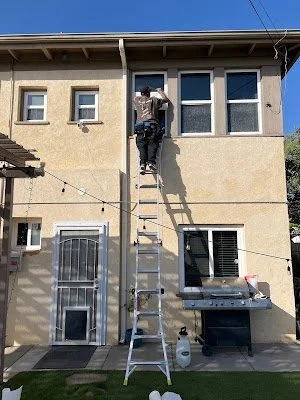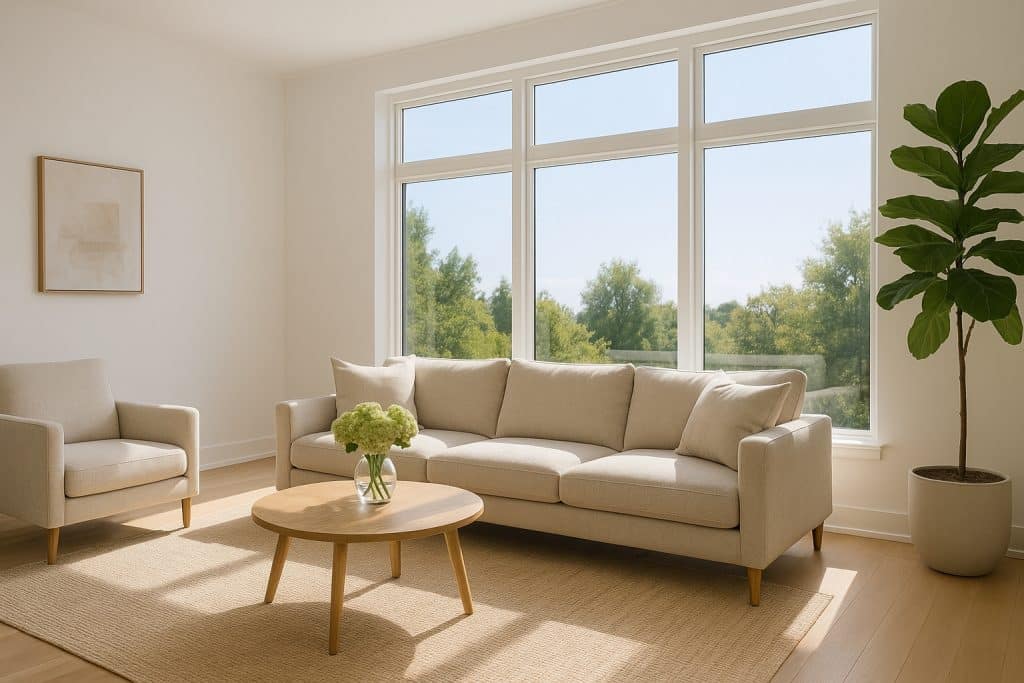Are you tired of your home feeling like a sauna in the summer and an igloo in the winter? Home window tinting may be the solution you need. It reduces heat, glare, and fading while providing privacy and security. This blog post will cover everything you need to know about home window tinting. We will dive into its benefits, popular types of tints available in the market, and factors to consider when choosing one that’s best for you. We’ll also provide tips on maintaining and caring for your tint over time. So, whether you’re looking to save money on energy bills or add some extra style to your home, keep reading to learn about home window tinting.
Understanding Home Window Tinting
Windows are crucial to any home, providing natural light, ventilation, and insulation. However, they can also let in unwanted heat, glare, and harmful UV rays. Home window tinting solves these problems, providing numerous benefits to homeowners.
What is Home Window Tinting?
Home window tinting involves applying a thin, transparent film to the windows of a home. This film is polyester and can be customized to fit any window size or shape. The film is applied to the inside of the window and is designed to block out certain wavelengths of light, such as UV rays while allowing visible light to pass through.
Process of Home Window Tinting
Home window tinting is a process that involves several steps to ensure a quality installation. Here is a general overview of the process:
- Measure and Cut: A professional installer will begin by measuring the size of each window that needs to be tinted. They will then use those measurements to cut the window film to the appropriate size and shape.
- Clean the Windows: The windows must be thoroughly cleaned before applying the window film. The installer will use a cleaning solution to remove dirt, grime, or debris from the window surface.
- Apply the Film: The window film is carefully applied to the inside of the window using a special adhesive. The installer will use a squeegee to remove any air bubbles or wrinkles from the film, ensuring a smooth and even application.
- Trim the Edges: Once the film is applied, the installer will trim the edges of the film to ensure a perfect fit. This step is especially important for irregularly shaped windows.
- Final Inspection: Finally, the installer will conduct a final inspection of the window tinting to ensure no air pockets, bubbles, or other defects in the film. They may also clean the window one final time to ensure it is spotless.
Benefits of Home Window Tinting
Home window tinting offers several benefits for homeowners. Here are some of the key benefits:
- Improved Energy Efficiency: Home window tinting can help reduce the heat entering your home during the summer months, lowering your cooling costs. It can also help retain heat during winter, reducing heating costs.
- Increased Comfort: Window tinting can help reduce glare and heat, making your home more comfortable and reducing the need for blinds or curtains.
- Protection from UV Rays: The sun’s harmful UV rays can cause damage to your skin and furniture. Home window tinting can block up to 99% of these harmful rays, protecting your family and belongings.
- Increased Privacy: Depending on the tint used, window tinting can provide increased privacy, preventing outsiders from seeing inside your home.
- Enhances Home Appearance: Home window tinting can improve the appearance of your home, giving it a sleek, modern look.
- Reduces Fading of Furnishings: UV rays can cause furniture, curtains, carpets, and artwork to fade. Home window tinting can help reduce the UV rays entering your home, protecting your furnishings and décor.
- Increased Security: Certain types of window tinting can provide added security by making it more difficult for burglars to break through the glass.
Popular Types of Home Window Tints
Several types of home window tints are available, each with unique benefits. Here are some of the most popular types:
Dyed Window Tint
This type of tint is made by placing a dye layer between an adhesive layer and a protective topcoat. It is the most affordable option and effectively blocks sunlight and reduces glare. However, it is not as effective at reducing heat as other types of tints.
Carbon Window Tint
Carbon window tint is made by infusing carbon particles into the film. It is more effective at reducing heat than dyed tints and more durable.
Ceramic Window Tint
Ceramic window tint is made by adding ceramic particles to the film. It is highly effective at blocking heat and UV rays, making it a popular choice for homeowners who want to improve energy efficiency and protect their furnishings from fading. It is also more expensive than other types of tints.
Metalized Window Tint
This type of tint is made by placing a layer of metallic particles between two adhesive layers. It is highly effective at reducing heat and blocking UV rays but can interfere with a cell phone and GPS signals.
Hybrid Window Tint
Hybrid window tint combines two or more types of tinting materials to create a film that offers multiple benefits, such as improved energy efficiency and enhanced privacy.
Factors to Consider When Choosing Home Window Tint
Choosing the right home window tint can be a challenging task. Here are some factors to consider when selecting a tint for your windows:
- Climate: The climate in your area is an important consideration when selecting a window tint. If you live in a hot, sunny climate, choose a highly effective tint that blocks heat and UV rays. On the other hand, if you live in a colder climate, you may want a tint that allows more sunlight to enter your home.
- Purpose: Consider why you want to tint your windows. If you are looking to increase privacy, consider a darker tint. If you are more concerned about reducing energy costs, you may want to choose a tint that is more effective at blocking heat.
- Type of Glass: The type of glass used in your windows can affect the effectiveness of the tint. For example, low-E glass is already energy efficient and may not need an additional tint to improve efficiency.
- Tint Color: The color of the tint can affect how it looks from both the inside and outside of your home. Darker tints offer more privacy but can also make your home look darker.
- Cost: The tinting material and installation cost is an important consideration. Higher-end tints, such as ceramic or metalized, tend to be more expensive but offer more energy efficiency and UV protection benefits.
- Warranty: Consider the warranty offered by the tinting manufacturer and installer. A reputable installer should offer a warranty on the tinting material and the installation.
Maintenance and Care for Home Window Tinting
Proper maintenance and care for your home window tinting can help prolong its lifespan and ensure it continues to provide the desired benefits. Here are some tips for maintaining and caring for your home window tinting:
- Wait before cleaning: It is recommended to wait at least 30 days after installation before cleaning the tinted windows to ensure the tint has fully cured.
- Use gentle cleaning methods: Use a soft cloth or sponge and mild soap or window cleaner when cleaning your tinted windows. Avoid using abrasive cleaners or materials that could scratch the tinted film.
- Avoid ammonia-based cleaners: Ammonia can damage the adhesive to attach the tint to the window. Therefore, avoid using ammonia-based cleaners or anything containing ammonia.
- Don’t use sharp objects: Avoid using sharp objects or razor blades to remove debris or adhesive residue from the tinted film. This can damage the film and even scratch the window.
- Regularly inspect the tint: Check the tinted film for any signs of damage or peeling. If you notice any issues, contact a professional installer to have it repaired or replaced.
- Consider window treatments: While window tinting can help reduce the UV rays that enter your home, it may not be enough to fully protect your furnishings from fading. Consider using window treatments, such as curtains or blinds, to protect your home.
Conclusion
In conclusion, choosing the right home window tint requires careful consideration of several factors, such as your budget, location, style, and preference. It’s important to understand the benefits of home window tinting and the different types available in the market. Whether you are looking for energy savings, privacy, or UV protection, there is a perfect tint. After installation, it’s important to take note of proper maintenance and care to ensure that your investment lasts longer.
At Superior Window Solutions, they understand the importance of quality window tinting for your home. That’s why they offer many options to meet your needs and preferences. Their team of experienced professionals will help you choose the perfect tint for your home and ensure that it is installed properly with a warranty. Contact them today to schedule a consultation and start enjoying the benefits of home window tinting.



